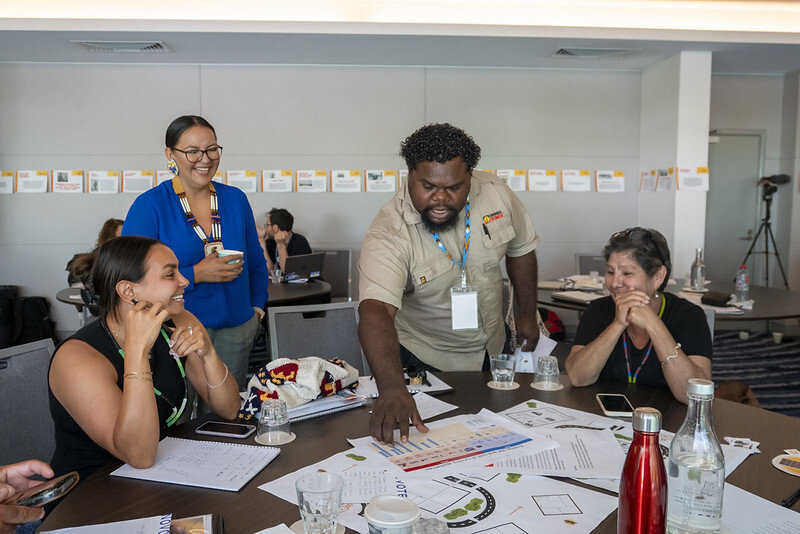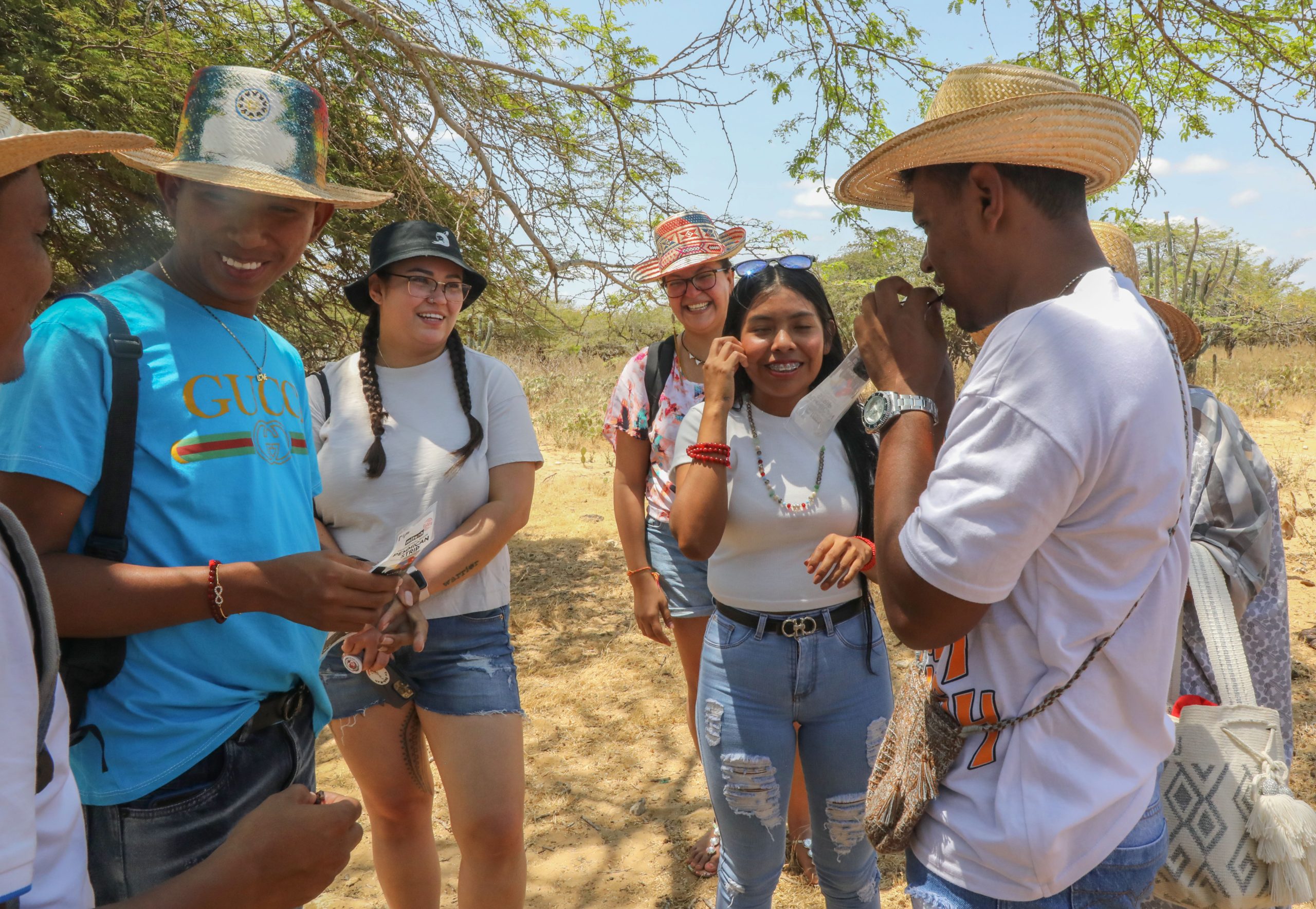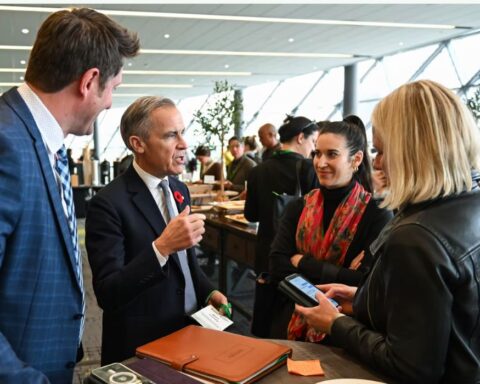In the remote Australian desert community where Chris Croker’s family lives, solar power delivered people power.
It started with drinking water around 30 years ago. A solar-powered electric pump drew water from the arid earth. Then came a tourism business with eco-camping that showcased the rugged countryside and a family-run bush-food plantation of quandong, a desert peach. They have 1,000 quandong trees, and the entire operation – from irrigation to sorting – is solar powered.
“For our family personally, renewables have been about us reclaiming our rights and living on country and being economically independent,” says Croker, a member of the Luritja Nation.
This is not generally the case in Australia, where Aboriginal people make up 3.8% of the population and struggle to assert a whole host of rights. That’s visible through the energy choices available to them: diesel generators that power larger Aboriginal communities spew noxious fumes in the middle of their towns, while transmission lines from large-scale renewable-energy projects bypass them en route to powering wealthier cities. With Australia setting ambitious goals to make its power supply 82% renewable by 2030, Croker set out to create an organization that would help advocate for a just energy transition – one that did not leave Aboriginal people out, nor leave them with meager scraps.
His research brought him to Canada, where Indigenous communities are the largest asset holders of clean energy projects after utility companies and the Crown. There, he found Indigenous Clean Energy (ICE), a not-for-profit organization that has been building capacity and expertise around clean energy and how to make it a tool for Indigenous sovereignty since 2016. Croker was attracted to ICE’s approach, which “turned the power dynamic on its head, having initiatives and government policy to be First Nations–led, which is the opposite of what we have in Australia.”
There are more than 200 renewable-energy projects – hydro, wind, solar and bioenergy – that have Indigenous participation in Canada, according to a report released by ICE in 2022. That includes sole ownership, co-ownership and defined financial benefits. Since 2017, the number of medium and large Indigenous clean energy projects has jumped by almost 30%. Hydro accounts for the biggest share (56.5%), followed by wind (22.9%), solar (11.8%), bioenergy (7.1%) and hybrid projects (1.7%). Small, community-scale energy systems dot the country. In April, the Ulkatcho First Nation in British Columbia announced it will construct the largest off-grid solar farm in the country, a $30-million project that will generate up to 70% of the electricity the community needs and dramatically reduce its diesel use, and in the process sell its energy to BC Hydro.
All of this is the result of decades of work going back to the early 2000s, when communities began pushing into the energy space, negotiating co-ownership of projects on ancestral lands and winning legal battles rooted in treaty rights that established that projects should include financial benefits for Indigenous communities. In 2019, ICE was officially incorporated as an independent organization. It has run several iterations of its Catalysts program, an intensive capacity-building program that gives participants the tools to make clean energy projects a reality, connecting them with coaches and mentors that address everything from energy planning to conservation and business management.
In 2020, ICE launched its Global Hub, intending to take its body of knowledge abroad to help other Indigenous Peoples with similar challenges.
“The lessons learned from so-called Canada we can share with our Indigenous kin around the world,” says Global Hub manager Daphne Kay, who is from Cowessess First Nation, on Treaty 4 Territory in Saskatchewan. “It’s not a silver bullet, it’s not a one size fits all, and our nation-to-nation relationship is about learning from each other.”

Australia was ICE’s first foray. It acted as a sister organization for the First Nations Clean Energy Network that Croker co-launched with Karrina Nolan, a Yorta Yorta woman. The organizations co-designed a PowerMakers program that led 32 Aboriginal and Torres Strait Islander people through training that included community engagement, fair partnership agreements, ownership models and policy negotiation. Croker says Australia is behind Canada when it comes to inclusion. The First Nations Clean Energy Network has tallied 15 energy projects with Aboriginal participation. While specific differences make progress more difficult – Aboriginal Peoples in Australia do not have treaty rights, for example – learnings around how to advocate with policy-makers have been instrumental, Croker says. “They helped us mobilize and organize.”
ICE’s work has also stretched into the Global South, to Colombia, where a delegation visited two Indigenous groups this year: a Cofán community in the southern department of Nariño and a Muisca community in the department of Boyacá, near the capital of Bogotá.
“We’ve been talking about decolonizing power and what doing decolonial support for our kin means,” says Freddie Huppé Campbell, ICE’s director of energy and climate and a Michif woman from the Ktunaxa Kinbasket territory, in British Columbia, who visited Colombia with Kay upon the invitation of the two communities. Part of that is moving outside of the colonial spaces of government and aid organizations and into territories, visiting homes and meeting families. Aura Balanta, an Afro Colombian activist and artist who helped guide the ICE delegation with a group called Grassroots Movement of Movements, calls it an exercise in “ancestral diplomacy.” It included ceremonies, exchanging gifts and listening to one another.
“Developing those kinds of connections with kin is unheard of, and it shouldn’t be,” Campbell says. “It felt really powerful.”
Balanta says ICE is the first organization she has come across that is approaching the green transition in this way. She hopes ICE can help Colombian President Gustavo Petro’s government, which has stopped issuing new oil and gas contracts and is shifting the country to renewables with a lofty plan to create 20,000 “energy communities,” many on Indigenous territory.
While Petro’s government has changed the way the Colombian state considers the views of Indigenous Peoples, Balanta says important problems in the approach persist. “The communities are not seen as an actor that will lead its own processes, but as the recipient of charity,” says Balanta, who points to a government reparations program that has given families solar panels but, in the case of the Cofán community, no tools or instruction on how to make them work properly.
The transition should be about empowerment for Indigenous Peoples, Balanta says, noting they comprise 6.2% of the global population but safeguard 80% of the planet’s biodiversity. The learnings between Indigenous communities go both ways, Campbell and Kay stress.
“Even though for us clean energy is a bridge to asserting our sovereignty, to being leaders in this space, to building systems that work for us and are in a different way, in the [Global] South things look very different,” says Campbell, who observed a greater connection to the earth in the communities the ICE delegation visited, and less consumer-driven societies. As a result, some Indigenous people she and Kay spoke with don’t necessarily feel they need to participate in the energy transition.
“It wasn’t until we started talking about the realm of what’s possible, how you can benefit in multiple intersectional ways from energy projects, that it became of interest to [these communities],” Kay says.







